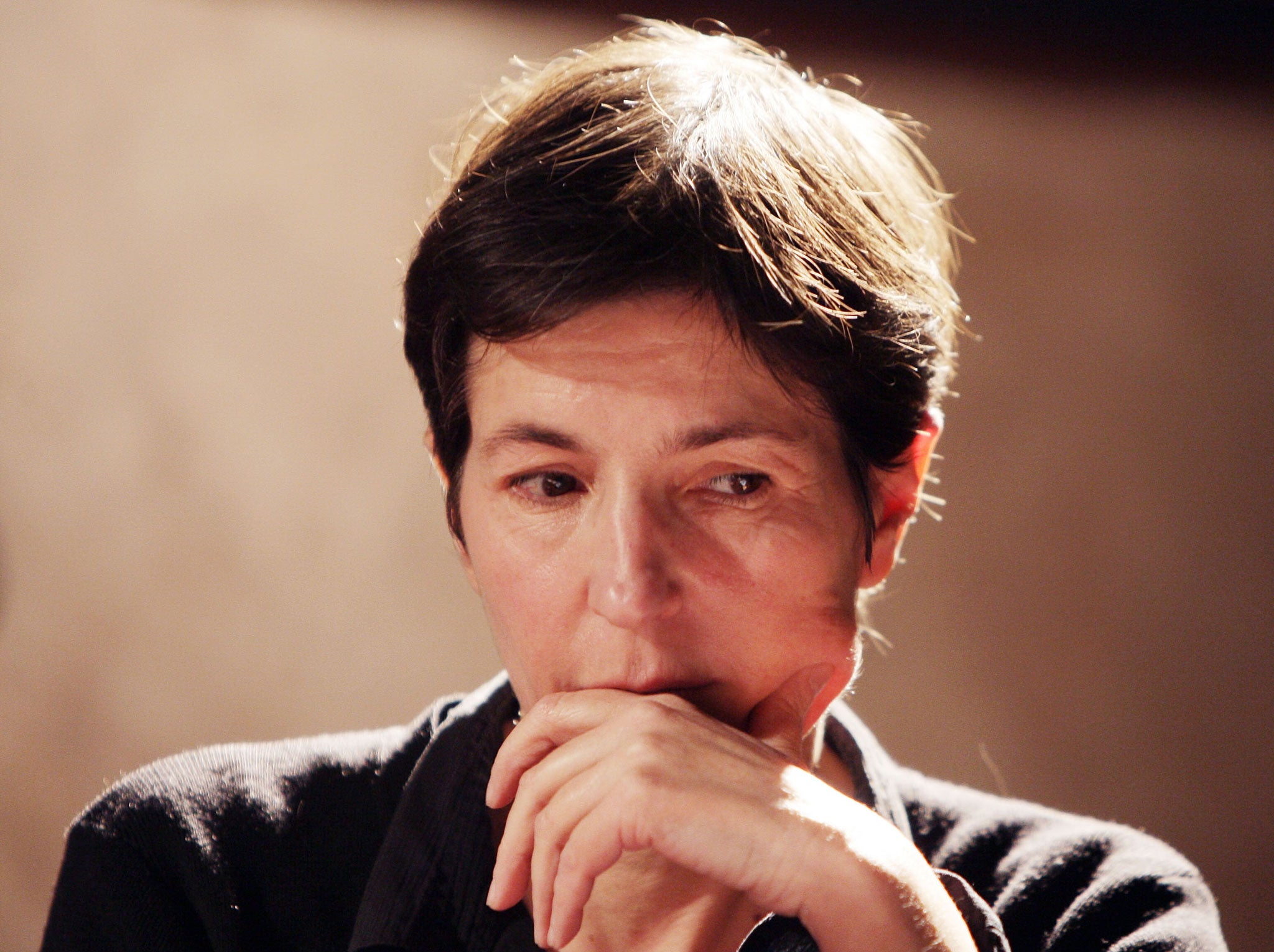Christine Angot, her husband's ex-girlfriend and the cardinal sin of fiction: not actually making it up
As writers from Kureishi to Bainbridge have found, the business of writing real people into novels is tricky, especially if theirs is a real-life story you’re dying to tell


Fans of the French novelist Christine Angot praise her “courageous” writing, her skilful conflations of fiction and autobiography, her “challenging” of social taboos. Critics say she’s guilty of introspective narcissism. This week, a criminal court in Paris found her guilty of the cardinal sin of fiction writing: not making it up at all.
For the transgressions in her new book The Little Ones, Ms Angot, right, had to pay £34,000 damages to Elise Bidoit, the former girlfriend of her current partner, Charly Clovis.
Poor Elise has come to dread opening any new novel by Ms Angot. She keeps finding a very thinly disguised version of herself, her father, her ex-boyfriend and her four children in them, with all their faults laid bare – even extracts from real-life social-service reports on the kids. Details of Elise’s life – the kind of things only an ex-intimate would know – are interspersed with episodes which may be taken as true by the reader.
At the trial, the author’s defence ingeniously suggested that such narrative liberties were part of a French literary tradition of grubby realism, and argued that Ms Angot’s creative freedom should be upheld.
It didn’t wash. The judges decided she had pinched chunks of Elise’s life and used them to create a caricature. In a wonderfully pretentious Gallic phrase, they argued that Ms Angot hadn’t converted the real person into “a character expressing ‘a truth’ that belongs solely to her”. (And of course, Ms Angot had done the same thing to the hapless Elise in a previous book, The Lover Market, five years earlier and had to settle out of court to the tune of €10,000.
Such appropriations of reality for writerly use aren’t exclusively French, of course. Literary history is full of novels featuring characters too close to real life for the comfort of the portrayed. The journalist David Sexton threatened to sue the publishers of his ex-beloved Amanda Craig’s A Vicious Circle in 1996 because he believed it contained an unflattering portrayal of him.
Hanif Kureishi’s Intimacy charted the reasons why the narrator leaves his wife and children shortly after the author did exactly that. His sister later attacked him for exploiting their family’s history in The Buddha of Suburbia but also (confusingly) for fabricating some of it.
It’s tricky, this business of writing real people into novels, especially if theirs is a real-life story you’re dying to tell. Best, perhaps, to take the advice of the late great Beryl Bainbridge, who wanted to write about her feelings for her chronically warring parents. She started writing her first novel, Harriet Said, “but my parents were alive and I didn’t want to hurt them”, she later confessed. “So I took the plot out of the newspaper about these two girls who killed their mother…”
Got that, Mme Angot? Lay a lot of smoke in future. And for God’s sake, don’t mention les enfants.

Join our commenting forum
Join thought-provoking conversations, follow other Independent readers and see their replies